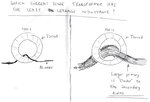T
treez
Guest
Still incomplete drawings. Where's the return path?
The return path is as I explained in post #32. This is a CST that will be used in the drain connection of the power fet of a boost pfc converter.
Please find UCC28070 datasheet with CST pictured on first page..
https://www.ti.com/lit/ds/symlink/ucc28070.pdf

